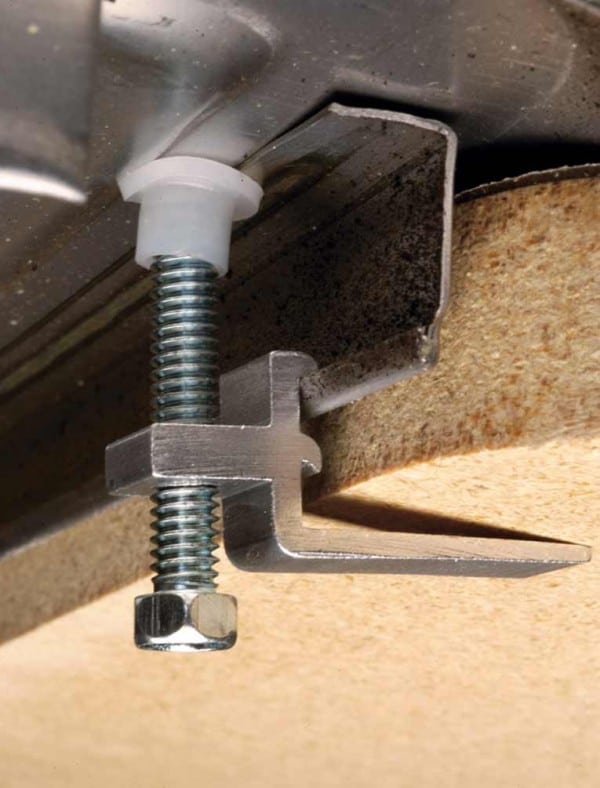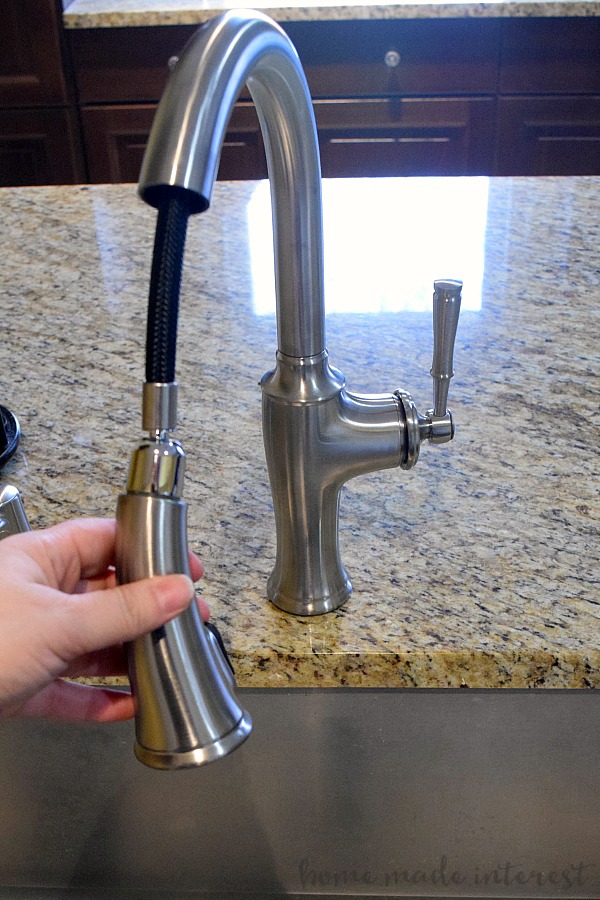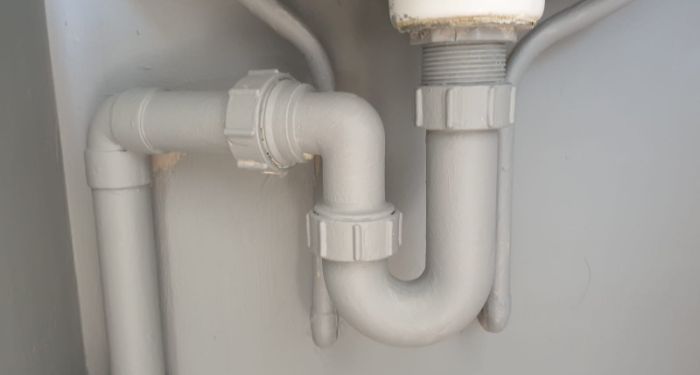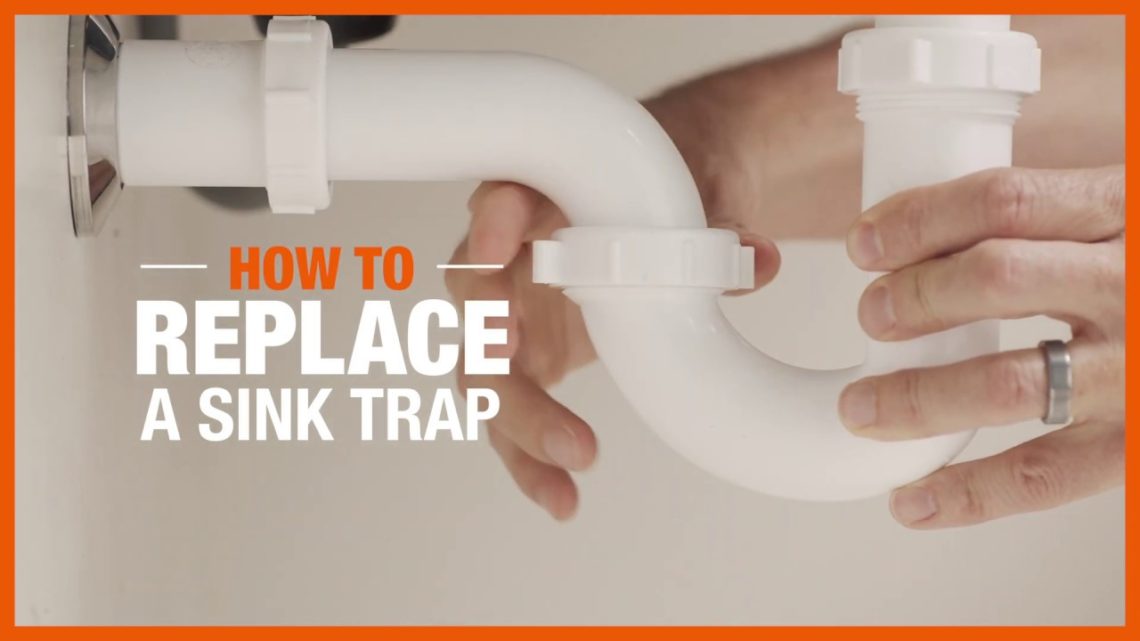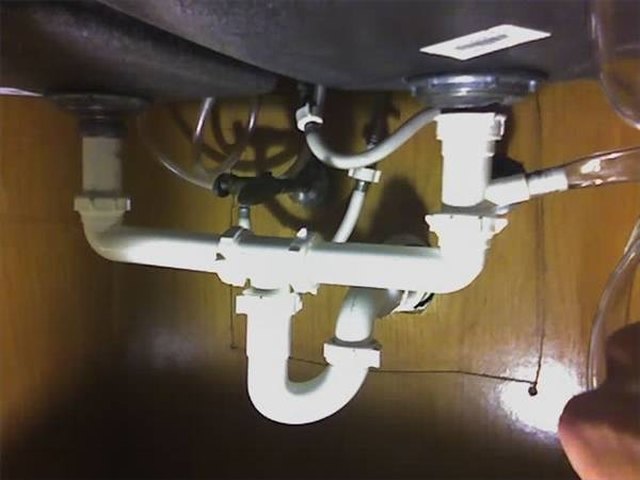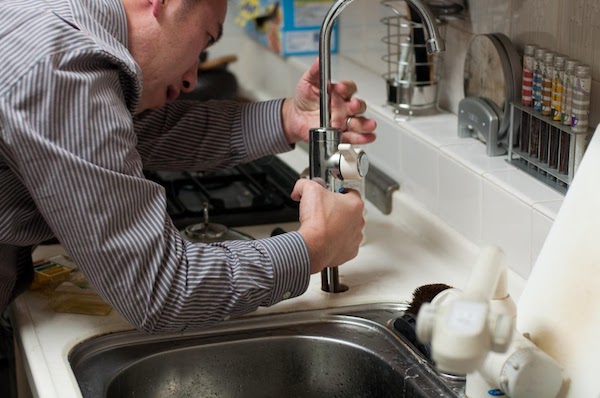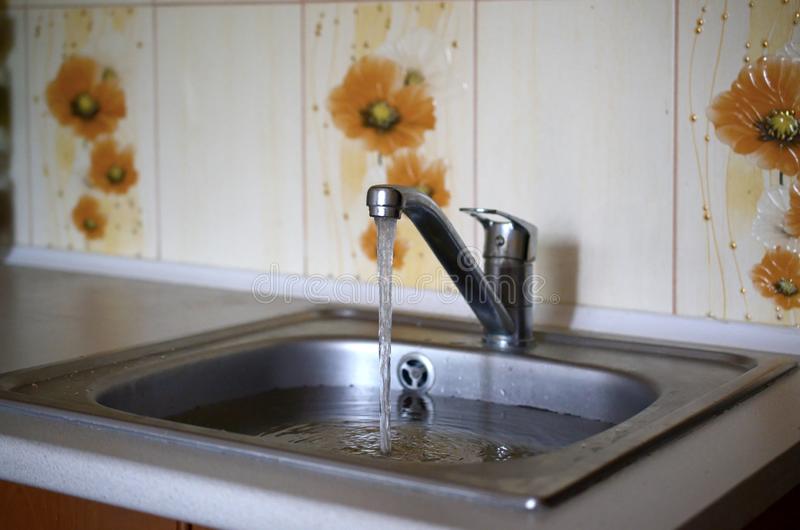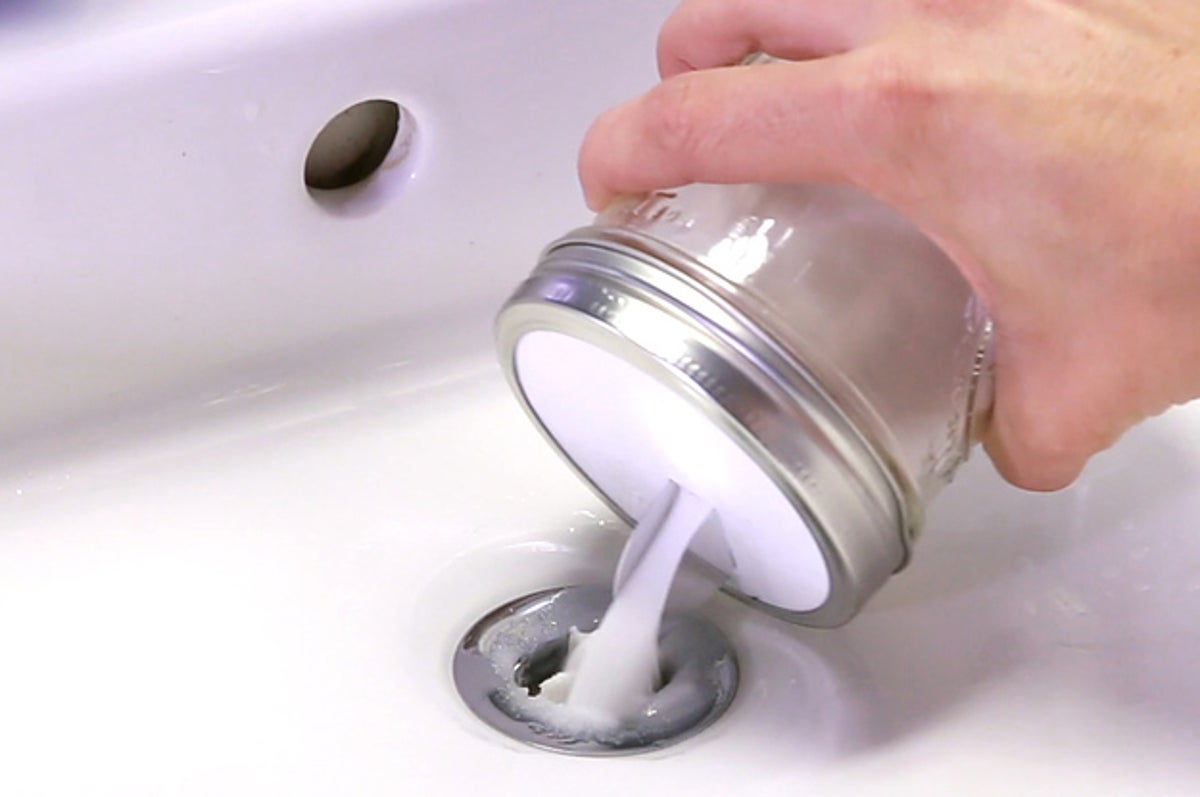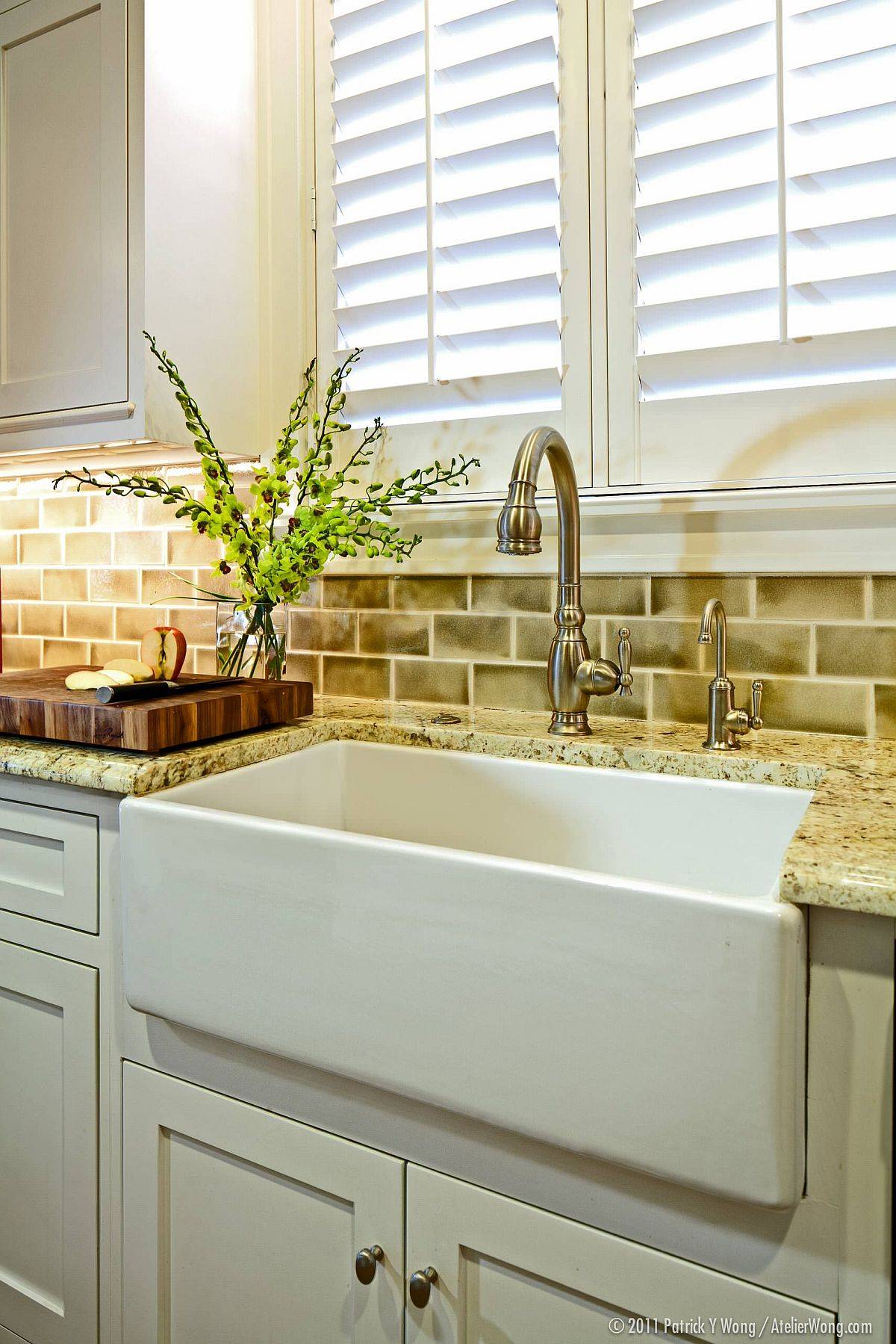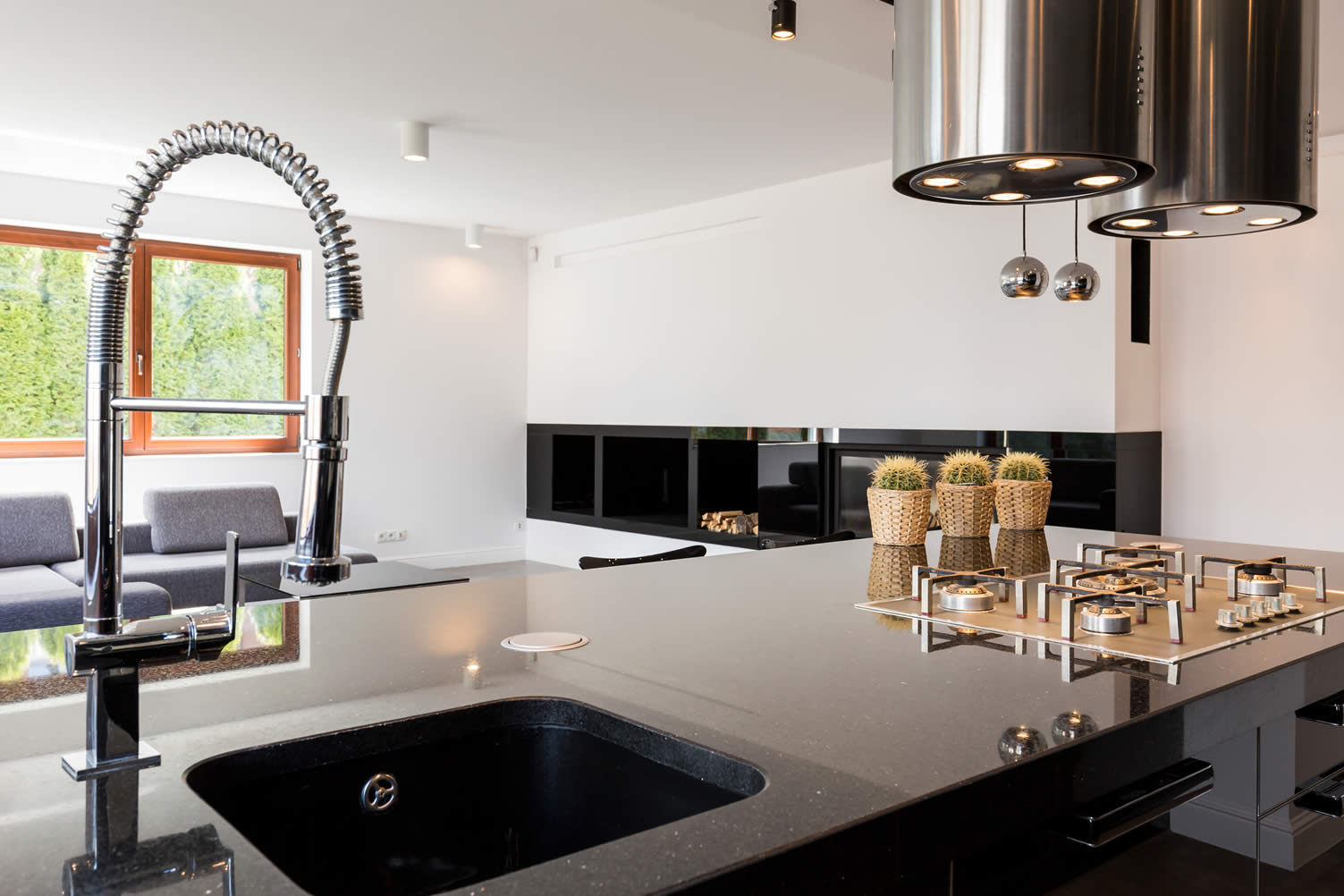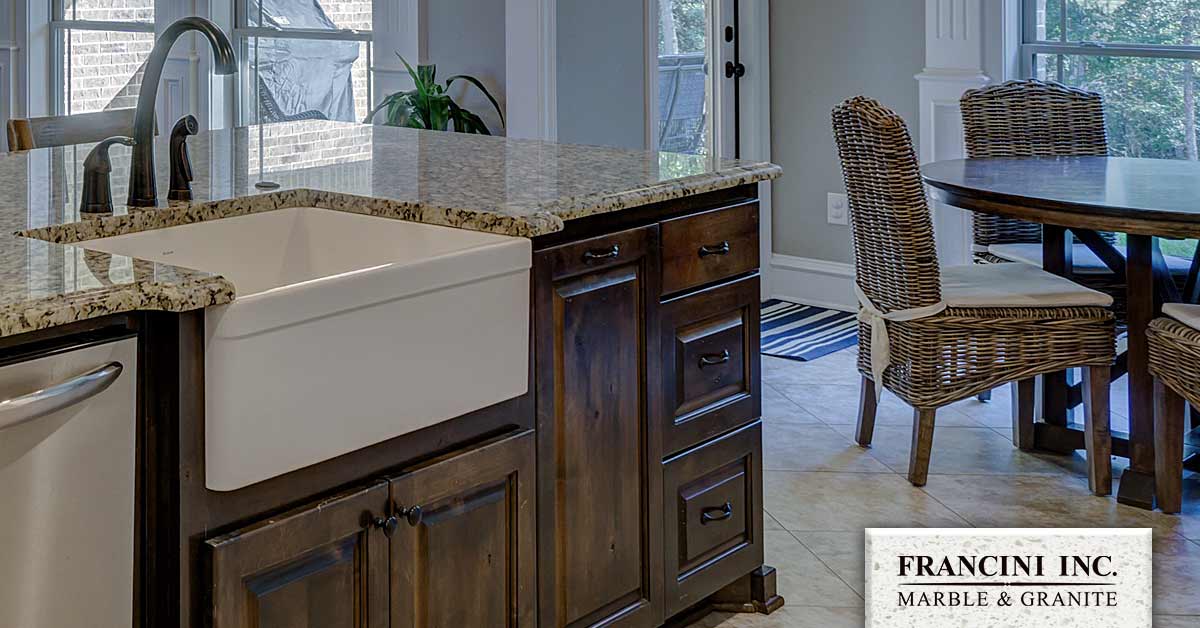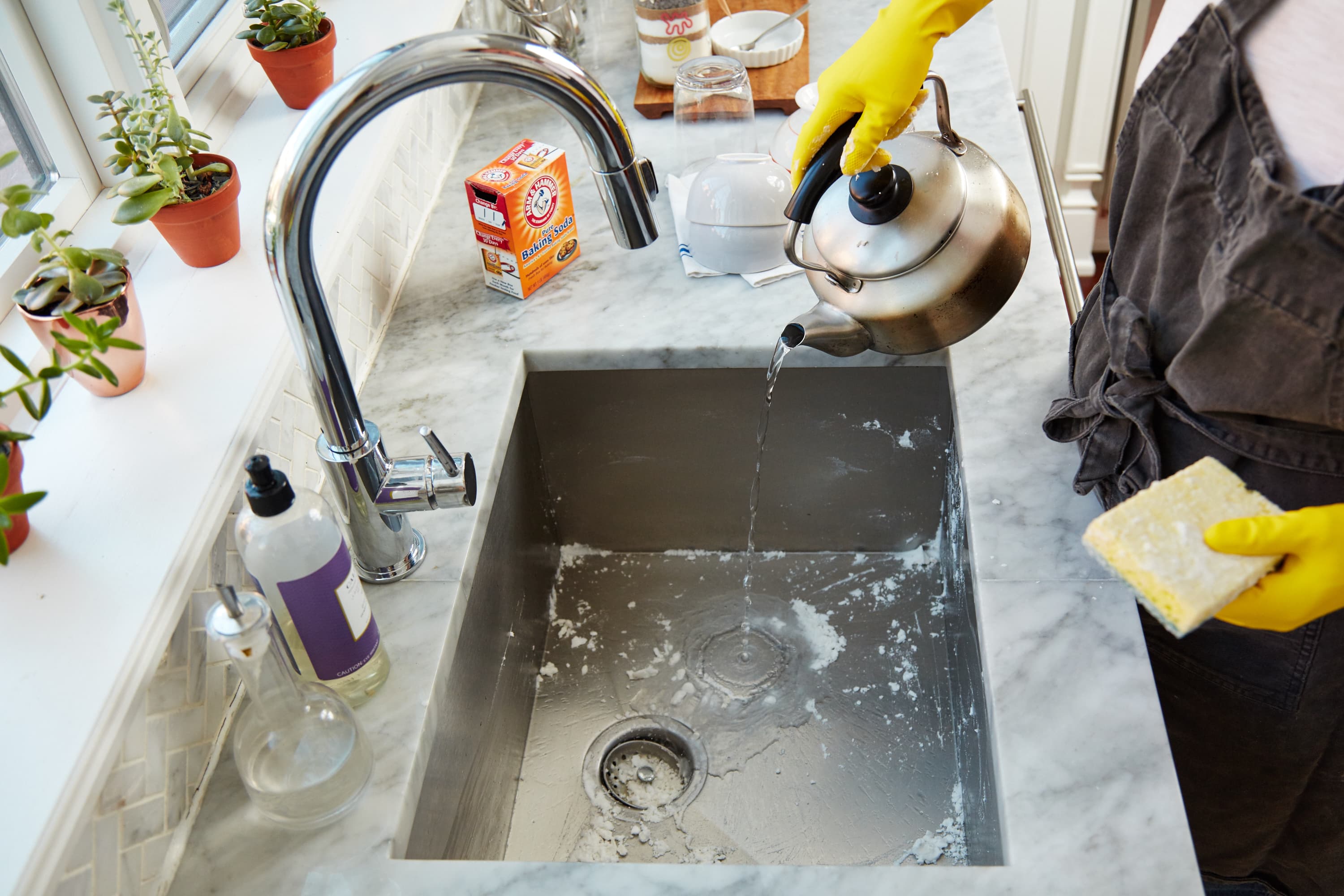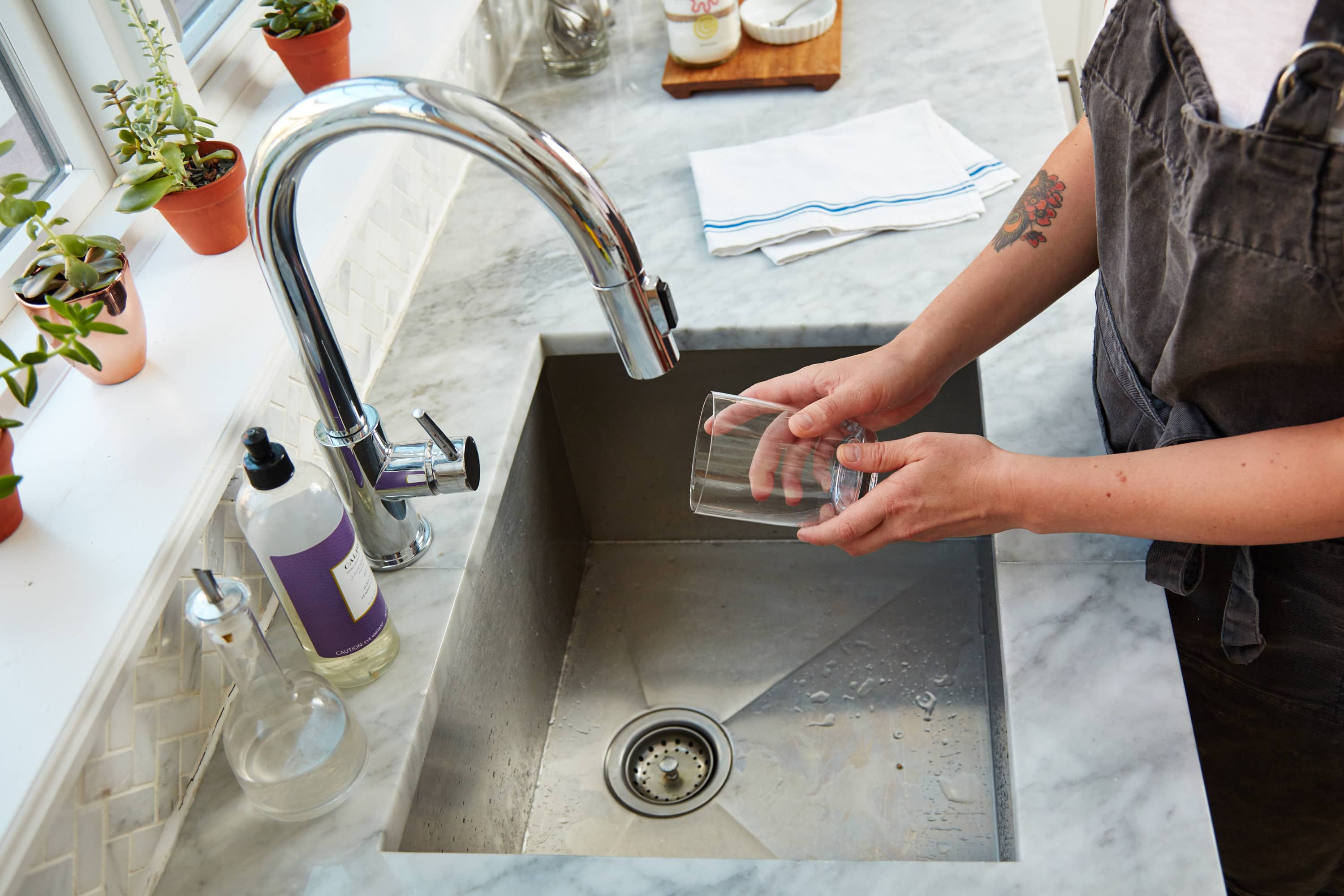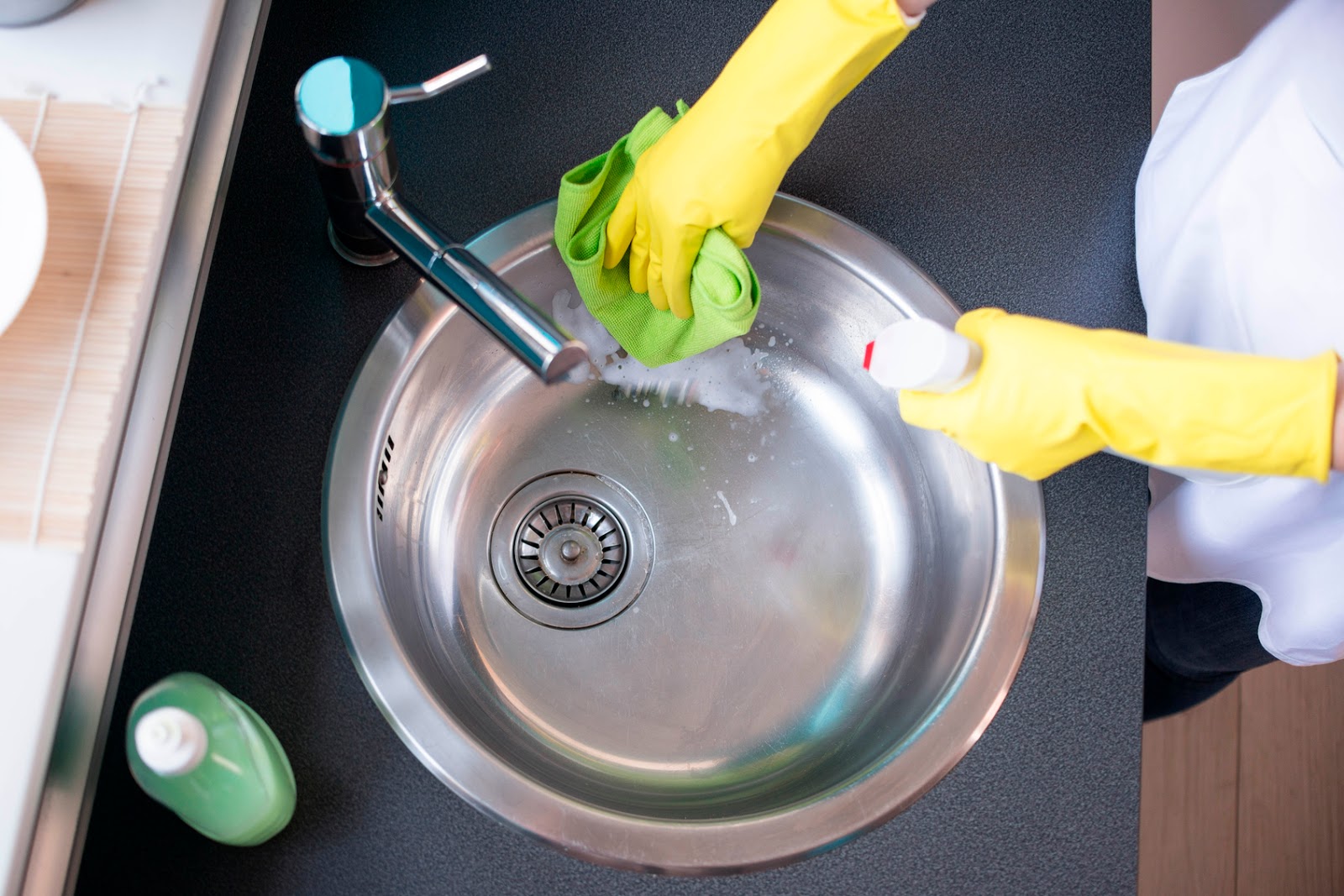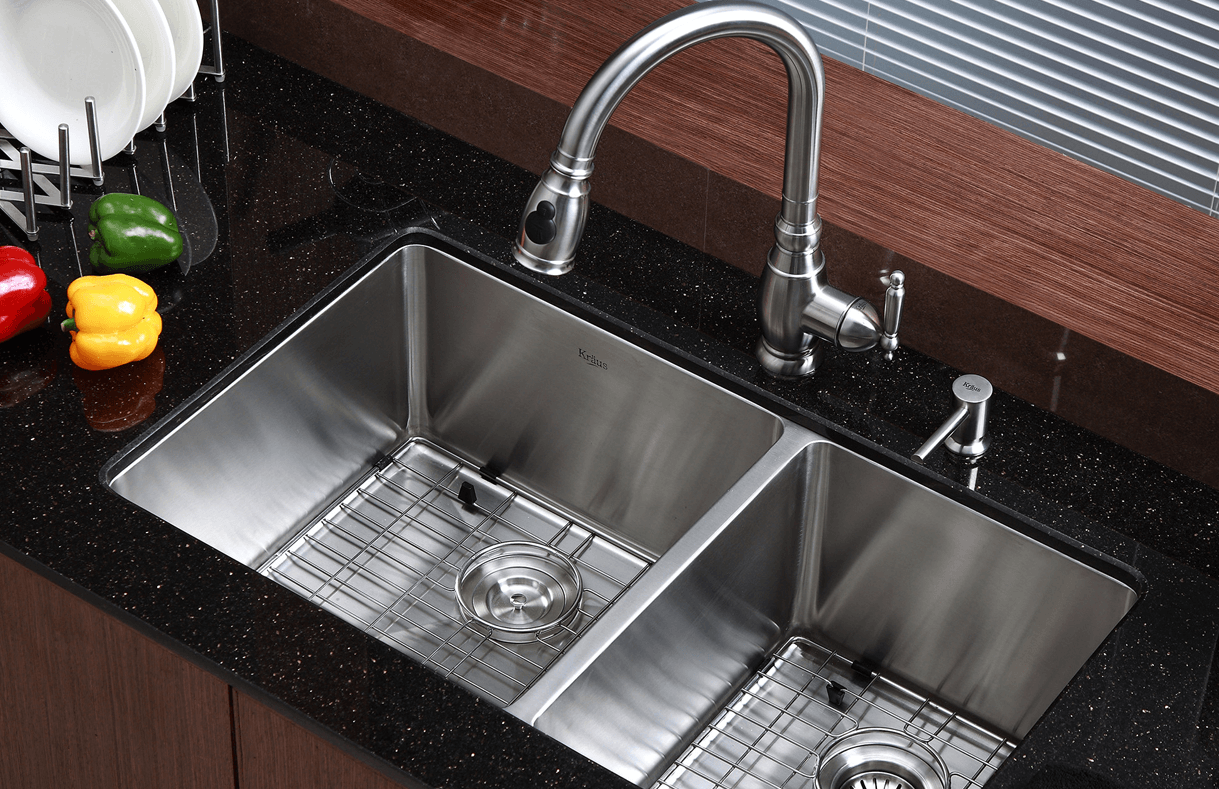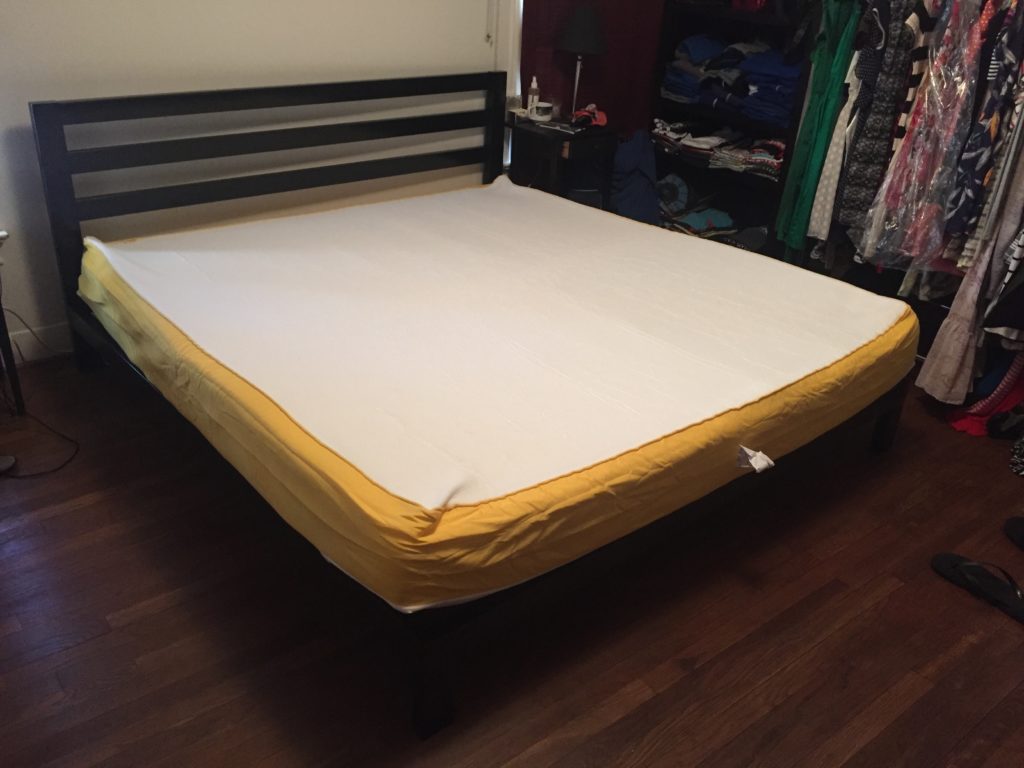Installing a kitchen sink u bend may seem like a daunting task, but with the right tools and instructions, it can be done easily. The u bend, also known as a P-trap, is an essential part of your kitchen sink plumbing as it prevents sewer gases from entering your home and also traps debris that can cause clogs. To install a kitchen sink u bend, you will need a wrench, plumber's putty, and a new u bend. First, turn off the water supply to your sink and remove any items from under the sink. Then, using the wrench, loosen the nuts that hold the u bend in place. Carefully remove the old u bend and clean the area where it was attached. Next, take your new u bend and apply plumber's putty to the openings where the pipes will connect. This will create a watertight seal. Then, attach the new u bend to the sink drain and the pipe that leads to the wall. Tighten the nuts with your wrench and turn the water supply back on. Run water through the sink to test for any leaks. If everything looks good, you have successfully installed your new kitchen sink u bend!How to Install a Kitchen Sink U Bend
If your kitchen sink u bend is damaged or leaking, it may need to be replaced. Replacing a u bend is similar to installing one, but you will need to remove the old one first. As always, start by turning off the water supply and removing any items from under the sink. Disconnect the u bend from the sink drain and the pipe leading to the wall, using a wrench to loosen the nuts. Remove the old u bend and clean the area where it was attached. Then, follow the same steps as installing a new u bend, making sure to apply plumber's putty to the openings and tightening the nuts securely. Replacing a kitchen sink u bend can be a messy job, so be sure to have some rags or towels handy to clean up any excess water. Once the new u bend is installed, turn the water supply back on and check for any leaks. If everything looks good, you have successfully replaced your kitchen sink u bend.How to Replace a Kitchen Sink U Bend
Kitchen sink u bends can experience several common problems that may require repair or replacement. One of the most common issues is a clog, which can be caused by food particles, grease, or other debris getting stuck in the u bend. If this happens, you may notice slow draining or standing water in your sink. Another common problem is a leak, which can be caused by a loose or damaged u bend. Leaks can also occur if the u bend is not properly installed or if the nuts are not tightened enough. If you notice any leaks, it is important to address them as soon as possible to prevent water damage to your home.Common Problems with Kitchen Sink U Bends
If your kitchen sink u bend is clogged, there are a few steps you can take to try and clear the blockage. First, try using a plunger to dislodge the clog. Place the plunger over the drain and push and pull several times to create suction. If that doesn't work, you can try using a plumbing snake to break up the clog. If these methods do not work, you may need to remove the u bend to remove the clog manually. Follow the steps for replacing a u bend, but instead of installing a new one, clean the u bend thoroughly and remove any debris. Then, reattach the u bend and test for any leaks.How to Unclog a Kitchen Sink U Bend
When it comes to choosing the right material for your kitchen sink u bend, there are a few options to consider. The most common materials are PVC, ABS, and metal. PVC and ABS are both lightweight and affordable options, but they may not be as durable as metal u bends. Metal u bends, such as brass or stainless steel, are more heavy-duty and can withstand higher temperatures and pressure. They are also less likely to crack or break over time. However, they are more expensive than PVC or ABS u bends. Consider your budget and the level of usage your kitchen sink gets when deciding on the best material for your u bend.Choosing the Right Kitchen Sink U Bend Material
If you notice a leak coming from your kitchen sink u bend, it is important to address it as soon as possible to prevent further damage. First, check the nuts that connect the u bend to the sink drain and the pipe leading to the wall. Make sure they are tight and properly aligned. If the nuts are not the issue, the u bend itself may be damaged and need to be replaced. Follow the steps for replacing a u bend and make sure to apply plumber's putty to create a watertight seal. After installing the new u bend, check for any leaks and tighten the nuts as needed.How to Fix a Leaking Kitchen Sink U Bend
The kitchen sink u bend may seem like a simple plumbing fixture, but it serves an important purpose in your home. Its main function is to prevent sewer gases from entering your home through the sink drain. It also acts as a trap for debris, preventing clogs from forming further down the plumbing system. Without a u bend, you would be at risk of inhaling harmful gases and potentially dealing with frequent clogs in your kitchen sink. So, while it may not be the most glamorous part of your kitchen, the u bend plays a crucial role in keeping your home safe and functioning properly.Understanding the Purpose of a Kitchen Sink U Bend
Regularly cleaning your kitchen sink u bend can help prevent clogs and keep your plumbing system running smoothly. To clean the u bend, start by removing it from the sink drain and the pipe leading to the wall. Use a brush or cloth to scrub away any debris or buildup inside the u bend. You can also use a mixture of baking soda and vinegar to help break down any stubborn grime or odors. After cleaning, rinse the u bend with warm water and reattach it to the sink and pipe. It is recommended to clean your u bend at least once a month to maintain proper function.How to Clean a Kitchen Sink U Bend
In addition to regular cleaning, there are a few other tips that can help maintain your kitchen sink u bend and prevent problems. Avoid pouring grease or oil down your sink as it can solidify and cause clogs. Use a drain strainer to catch any food particles before they go down the drain. It is also important to periodically check the u bend for any signs of damage or wear. If you notice any cracks or loose fittings, it may be time to replace the u bend before it causes any further issues. By taking these preventative measures, you can prolong the lifespan of your kitchen sink u bend and avoid costly repairs.Tips for Maintaining Your Kitchen Sink U Bend
When installing a kitchen sink u bend, there are a few common mistakes that can lead to problems down the road. One of the biggest mistakes is not properly aligning the u bend with the sink drain and the pipe leading to the wall. This can cause leaks and prevent the u bend from functioning properly. Another mistake is not tightening the nuts enough or using the wrong type of wrench, which can result in leaks or a loose u bend. It is important to follow the instructions carefully and make sure all connections are secure before using the sink. If you are unsure about any steps, it is always best to consult a professional plumber.Common Mistakes to Avoid When Installing a Kitchen Sink U Bend
Why a Proper Kitchen Sink U Bend Plumbing is Essential in House Design
The Importance of a Kitchen Sink U Bend Plumbing System
 When it comes to designing a house, every little detail matters. From the color of the walls to the type of flooring, each element plays a crucial role in creating a comfortable and functional living space. One aspect that often gets overlooked is the
kitchen sink u bend plumbing
system. Many homeowners may not realize the importance of this component, but it is actually an essential part of any house design.
When it comes to designing a house, every little detail matters. From the color of the walls to the type of flooring, each element plays a crucial role in creating a comfortable and functional living space. One aspect that often gets overlooked is the
kitchen sink u bend plumbing
system. Many homeowners may not realize the importance of this component, but it is actually an essential part of any house design.
The Function of a Kitchen Sink U Bend Plumbing
 The kitchen sink u bend plumbing is a crucial part of the drainage system in any household. It is responsible for carrying waste water from the sink to the main sewage line. Without a proper u bend, the waste water would have nowhere to go and could potentially cause a backup or blockage in the pipes. This can lead to unpleasant odors, leaks, and even damage to the surrounding areas.
The kitchen sink u bend plumbing is a crucial part of the drainage system in any household. It is responsible for carrying waste water from the sink to the main sewage line. Without a proper u bend, the waste water would have nowhere to go and could potentially cause a backup or blockage in the pipes. This can lead to unpleasant odors, leaks, and even damage to the surrounding areas.
The Benefits of a Proper Kitchen Sink U Bend Plumbing
 Having a well-designed and properly installed u bend plumbing system for your kitchen sink can bring numerous benefits to your house design. First and foremost, it ensures the efficient and effective drainage of waste water, keeping your kitchen clean and hygienic. It also helps prevent clogs and blockages, saving you from potential plumbing emergencies and costly repairs.
Moreover, a well-maintained kitchen sink u bend plumbing system can also improve the overall aesthetic of your house. With proper installation, the u bend can be hidden behind cabinets or walls, creating a sleek and seamless look in your kitchen. This can add value to your house and make it more appealing to potential buyers in the future.
Having a well-designed and properly installed u bend plumbing system for your kitchen sink can bring numerous benefits to your house design. First and foremost, it ensures the efficient and effective drainage of waste water, keeping your kitchen clean and hygienic. It also helps prevent clogs and blockages, saving you from potential plumbing emergencies and costly repairs.
Moreover, a well-maintained kitchen sink u bend plumbing system can also improve the overall aesthetic of your house. With proper installation, the u bend can be hidden behind cabinets or walls, creating a sleek and seamless look in your kitchen. This can add value to your house and make it more appealing to potential buyers in the future.
Designing a Kitchen Sink U Bend Plumbing System
 When it comes to designing a kitchen sink u bend plumbing system, it is important to consider the layout and functionality of your kitchen. The u bend should be strategically placed to allow for a smooth flow of water and easy access for maintenance purposes. It is also crucial to choose high-quality materials and hire a professional plumber to ensure proper installation.
In conclusion, a proper kitchen sink u bend plumbing system is an essential component in any house design. It not only ensures efficient drainage and prevents plumbing issues but also adds to the overall aesthetic of your home. Therefore, when planning your house design, do not overlook the importance of a well-designed and properly installed kitchen sink u bend plumbing system.
When it comes to designing a kitchen sink u bend plumbing system, it is important to consider the layout and functionality of your kitchen. The u bend should be strategically placed to allow for a smooth flow of water and easy access for maintenance purposes. It is also crucial to choose high-quality materials and hire a professional plumber to ensure proper installation.
In conclusion, a proper kitchen sink u bend plumbing system is an essential component in any house design. It not only ensures efficient drainage and prevents plumbing issues but also adds to the overall aesthetic of your home. Therefore, when planning your house design, do not overlook the importance of a well-designed and properly installed kitchen sink u bend plumbing system.
